Many adults think they missed their chance to learn music, but that’s simply not true. The ukulele, keyboard, harmonica, and bongos are among the easiest instruments for adults to start with, allowing you to play simple songs within just a few weeks of practice.
Learning music as an adult actually comes with some surprising advantages over childhood lessons. You have better focus, clearer goals, and the patience to stick with practice when it gets challenging.
The key is choosing an instrument that matches your lifestyle and interests, whether you’re drawn to simple percussion instruments for their rhythm or string instruments for their melody. We’ll walk you through everything from what makes certain instruments beginner-friendly to practical tips for starting your musical journey today.
What Makes an Instrument Easy to Learn for Adults?
Adult learners need instruments that fit their busy schedules, physical abilities, and learning goals. The best beginner instruments require minimal music theory knowledge and offer quick wins to keep you motivated.
Key Factors For Adult Beginners
Simple finger placement makes all the difference when you’re learning your first instrument. Instruments like the ukulele only require one or two fingers to make chords, while piano keys show you exactly where each note sits.
Quick progress keeps you excited about practicing. The harmonica lets you make music almost immediately without needing complex techniques or years of study.
Visual learning works great for adults. Instruments with clear note layouts help you understand what you’re playing:
- Piano keys follow a simple black and white pattern
- Guitar frets show you exactly where to place fingers
- Drums let you see and feel each beat
Limited music theory requirements mean you can start playing songs right away. Many easiest instruments to learn use simple chord patterns or single notes instead of complex scales.
Key Factors For Adult Beginners
Simple finger placement makes all the difference when you’re learning your first instrument. Instruments like the ukulele only require one or two fingers to make chords, while piano keys show you exactly where each note sits.

Quick progress keeps you excited about practicing. The harmonica lets you make music almost immediately without needing complex techniques or years of study.
Visual learning works great for adults. Instruments with clear note layouts help you understand what you’re playing:
- Piano keys follow a simple black and white pattern
- Guitar frets show you exactly where to place fingers
- Drums let you see and feel each beat
Limited music theory requirements mean you can start playing songs right away. Many easiest instruments to learn use simple chord patterns or single notes instead of complex scales.
Physical Suitability and Comfort
Your hands and body need to feel comfortable with your chosen instrument. Adult fingers work well with
larger instruments like keyboards and guitars, but might struggle with tiny recorder holes.
Size matters for practice sessions. Instruments that fit easily in your living space encourage daily practice without setup hassles.
Weight affects how long you can practice comfortably. A heavy electric guitar might tire your shoulders after 20 minutes, while a lightweight ukulele lets you play for hours.
Breathing requirements vary widely between instruments. Wind instruments need strong lung capacity, while string and percussion instruments let you breathe normally while playing.
Joint health plays a big role in instrument choice. Arthritis or wrist problems might make guitar difficult, but piano or drums could work perfectly for your hands.
Affordability and Accessibility
Budget-friendly starter instruments let you test your interest without huge financial risk. Quality beginner keyboards start around $100, while decent acoustic guitars cost $150-300.
Hidden costs add up quickly with some instruments:
| Instrument | Initial Cost | Extra Costs |
|---|---|---|
| Keyboard | $100-400 | Stand, bench, headphones |
| Guitar | $150-300 | Picks, strings, tuner |
| Drums | $300-800 | Sticks, practice pad, lessons |
Online learning resources make practice more convenient and affordable. YouTube tutorials and apps work especially well for visual learners tackling their first instrument.
Maintenance requirements affect long-term costs. Harmonicas and keyboards need almost no upkeep, while guitars require regular string changes and occasional repairs.
Casio CT S200 Portable Keyboard Package
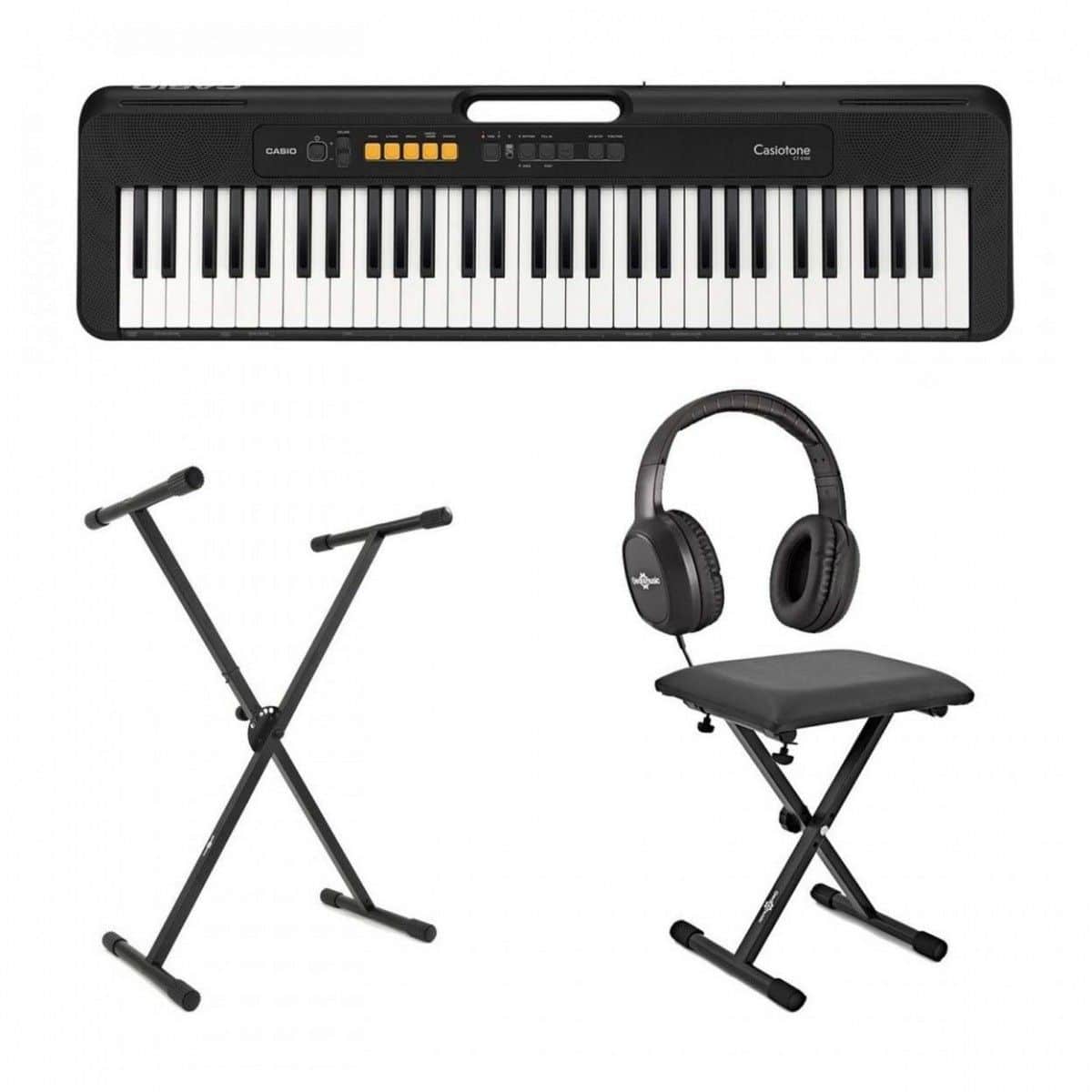
FEATURES: With 400 tones and 77 rhythms.
OTHER INFO: LCD display easily adjusts your settings.
- Built-in carry handle makes transportation easy.
- Includes AC power adapter.
- Limited number of keys.
When you click ‘Check Price’, you’ll see there are loads of great places to buy this item. Our personal favorite is Sweetwater for the US, and Thomann and Gear4Music for the UK & Europe.
They are the largest music retailers, with excellent customer service, competitive prices, really fast shipping, and the longest guarantees.
The professional musician who wrote this article combined many things,
from the product build, manufacturer’s reputation through to feedback
from other users, to create our famous TedScore™.
Top Easy To Learn Instruments For Adults
These four instruments stand out as the most beginner-friendly options, each offering unique advantages like simple chord structures, intuitive layouts, or minimal physical requirements. You can start making music within days rather than months with any of these choices.
Ukulele: Versatile and Beginner-Friendly
The ukulele tops most lists of easiest instruments to learn for good reason. With only four strings compared to a guitar’s six, you’ll master basic chords much faster.
Why ukuleles work so well for beginners:
- Only three or four finger positions create dozens of popular songs
- Lightweight design won’t strain your arms during practice
- Soft nylon strings feel comfortable on your fingertips
- Affordable price range from $50 to $200
You can play recognizable tunes like “Somewhere Over the Rainbow” or “Hey Soul Sister” after just a few practice sessions. The ukulele’s simple chord progressions translate well to other stringed instruments later.
Most adults find they can strum along to their favorite songs within two weeks. The happy, bright sound keeps you motivated even when you make mistakes.
Lanikai MA-B Mahogany Ukulele - Baritone
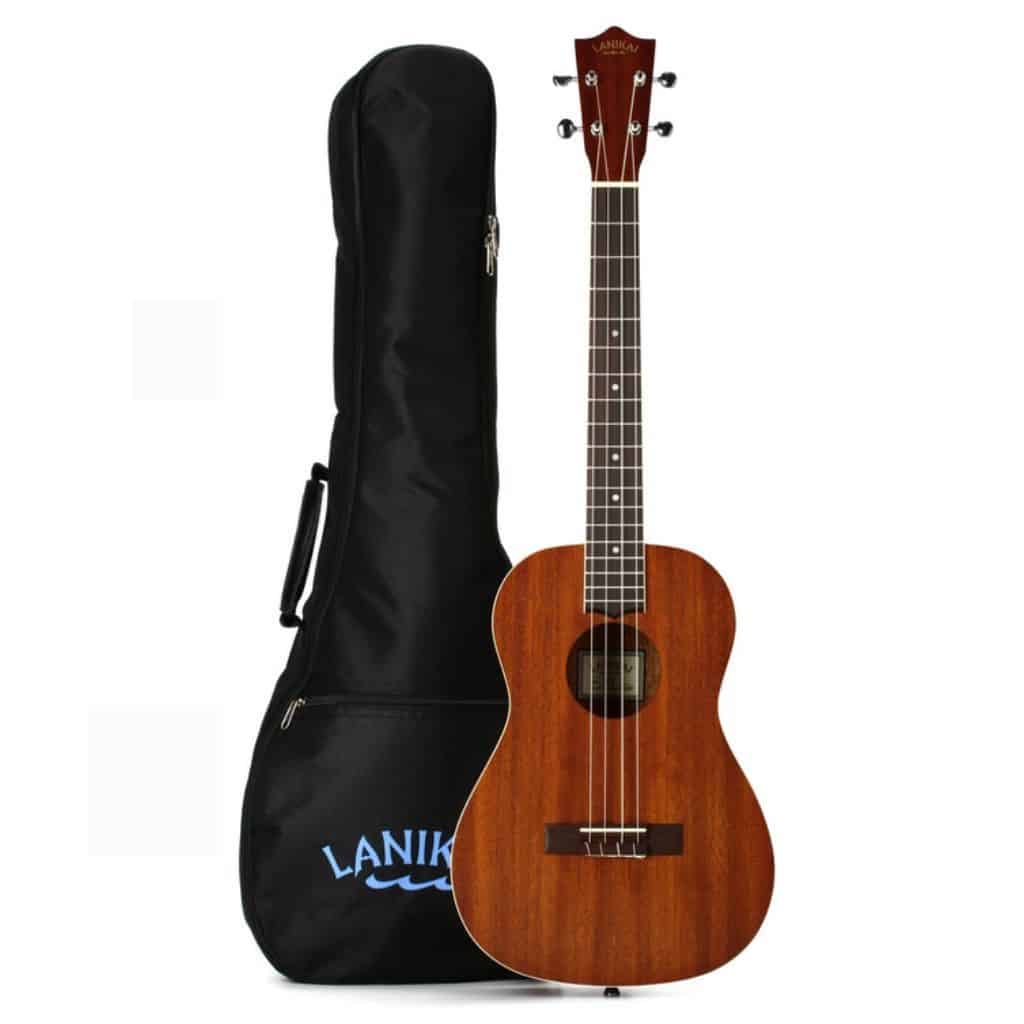
FEATURES: A wider nut for a slightly wider neck that makes playing comfortable. The rosewood fretboard allows for smoother articulation of melodies and enhances the playability of the instrument, making it easier to learn and handle for beginners.
OTHER INFO: The NuBone nut and saddle also provide tonal support to the already tone-rich mahogany body.
- The cream binding provides a beautiful contrast to the mahogany body.
- Chrome die-cast tuning machines offer solid support for staying in tune
- Comes with rosewood fingerboard
- None!
When you click ‘Check Price’, you’ll see there are loads of great places to buy this item. Our personal favorite is Sweetwater for the US, and Thomann and Gear4Music for the UK & Europe.
They are the largest music retailers, with excellent customer service, competitive prices, really fast shipping, and the longest guarantees.
The professional musician who wrote this article combined many things,
from the product build, manufacturer’s reputation through to feedback
from other users, to create our famous TedScore™.
Piano and Keyboards: Logical and Accessible
Piano and keyboards offer the most logical approach to understanding music theory. The black and white key pattern repeats every twelve notes, making it easy to visualize scales and chords.
Key advantages for adult learners:
- Visual layout: You can see exactly where each note sits
- No complex hand positions: Press a key and get a clear sound
- Both melody and harmony: Play the tune and accompaniment together
- Digital features: Many keyboards include learning modes and built-in lessons
Keyboards provide extra benefits like volume control for apartment living and hundreds of different instrument sounds. You don’t need finger strength or special breathing techniques like other instruments require.
Adult beginners often prefer keyboards over acoustic pianos because they’re portable and cost less. Start with simple melodies using just your right hand, then add left-hand chords as you improve.
Casio CT X700 Portable Keyboard

PERFECT FOR: Beginners and advancing players
FEATURES: With simple and easy-to-use functions for players
OTHER INFO: Built with a portable and compact design
Casio CT X700 Portable Keyboard
- Comes with a song bank with over 150 songs and built-in piano lesson functions
- Designed with Casio's new AiX sound source
- You can play songs easily with its Step-Up Lesson system
- More expensive compared to other keyboards
When you click ‘Check Price’, you’ll see there are loads of great places to buy this item. Our personal favorite is Sweetwater for the US, and Thomann and Gear4Music for the UK & Europe.
They are the largest music retailers, with excellent customer service, competitive prices, really fast shipping, and the longest guarantees.
The professional musician who wrote this article combined many things,
from the product build, manufacturer’s reputation through to feedback
from other users, to create our famous TedScore™.
Recorder: A Simple Start to Music
Don’t let childhood memories fool you – the recorder remains one of the most practical instruments for adult beginners. Modern recorders produce much better sound quality than the plastic school versions you might remember.
What makes recorders beginner-friendly:
- Simple fingering system: Cover holes to change notes
- Immediate results: Play melodies on your first day
- No reed maintenance: Unlike clarinets or saxophones
- Extremely portable: Fits in a small bag or purse
You’ll learn proper breathing techniques and finger coordination without the complexity of other wind instruments. The recorder teaches fundamental music skills that transfer to flutes, clarinets, or other woodwinds.
Quality wooden recorders cost $30 to $100 and produce surprisingly beautiful tones. Many adults find the focused, meditative practice relaxing after busy workdays.
Harmonica: Portable and Expressive
The harmonica packs incredible musical expression into a pocket-sized package. You can create soulful blues, folk melodies, or even classical pieces with this versatile instrument.
Why harmonicas suit busy adults:
- Ultimate portability: Practice anywhere without disturbing others
- No assembly required: Pull it out and start playing immediately
- Natural breathing: Uses your normal inhale and exhale patterns
- Quick progress: Play simple songs within hours of starting
Learning harmonica requires no complex finger work – just breath control and mouth positioning. Different holes produce different notes when you breathe in or out.
You can buy quality harmonicas for $20 to $50 in various keys. Start with a C major harmonica since most beginner songs and tutorials use this key.
The blues harmonica sound adds instant character to any musical style. Many guitar players learn harmonica as a second instrument because they complement each other perfectly.
Fender Midnight Blues Harmonica
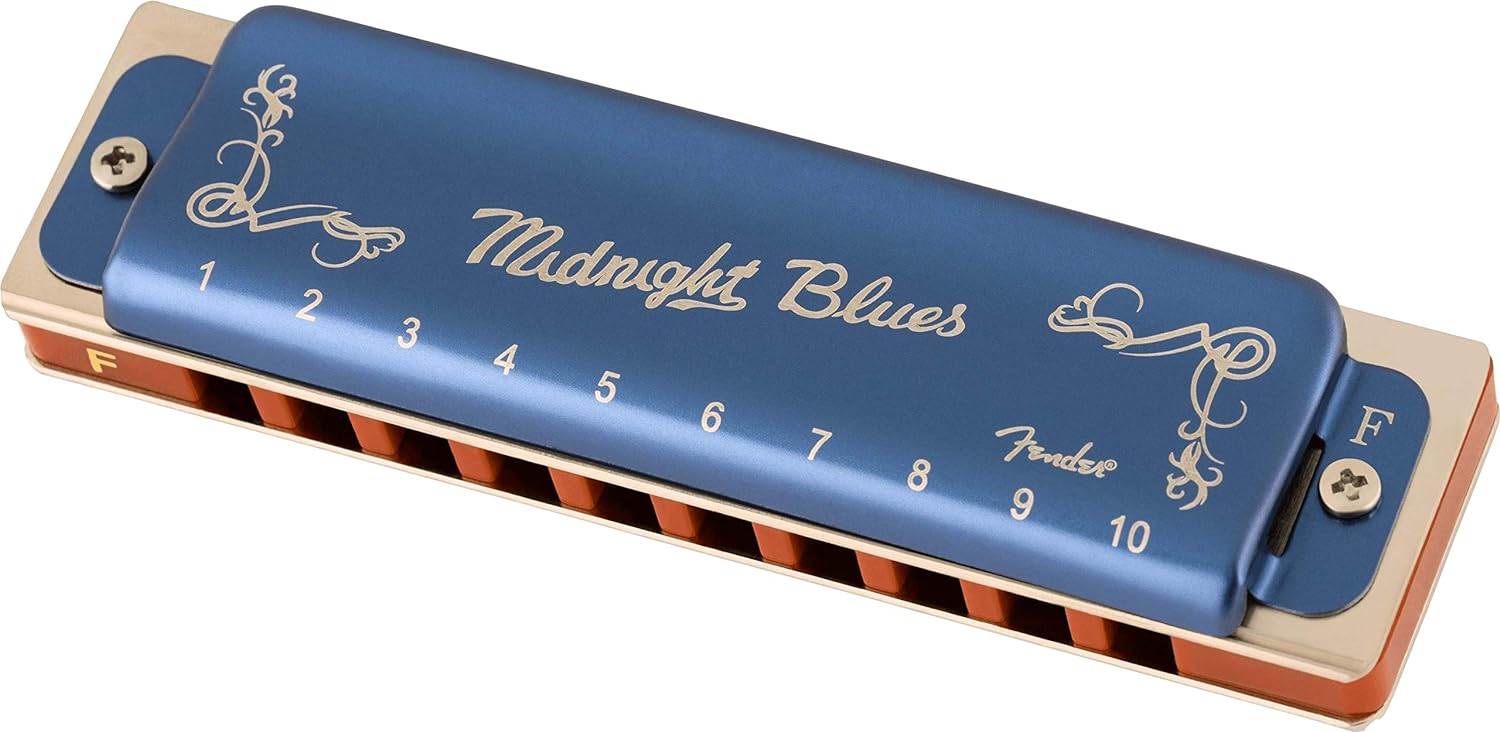
FEATURES: Bright and bold tone
OTHER INFO: Limited edition dark blue cover
- Perfect for performers of any level
- None
When you click ‘Check Price’, you’ll see there are loads of great places to buy this item. Our personal favorite is Sweetwater for the US, and Thomann and Gear4Music for the UK & Europe.
They are the largest music retailers, with excellent customer service, competitive prices, really fast shipping, and the longest guarantees.
The professional musician who wrote this article combined many things,
from the product build, manufacturer’s reputation through to feedback
from other users, to create our famous TedScore™.
Simple Percussion Instruments for Rhythm Lovers
Percussion instruments offer the perfect starting point for adults who want to feel music in their hands. These rhythm-based instruments let you create beats immediately and build your musical foundation through pure fun.
Drums: Foundational and Fun
Drums give you the heartbeat of music right at your fingertips. You can start with a simple practice pad or jump into a basic drum kit depending on your space and budget.
Basic drum types for beginners:
- Snare drum – sharp, crisp sounds
- Bass drum – deep, booming tones
- Tom drums – mid-range pitches
Learning drums helps you understand timing and rhythm better than almost any other instrument. You’ll develop coordination as your hands and feet work together to create different patterns.
Many adults find drums exciting because you can play along with your favorite songs right away. The physical movement and energy release make drumming feel more like exercise than practice.
Start with simple 4/4 beats using just your hands. Once you master basic patterns, you can add foot pedals and more complex rhythms to expand your skills.
Sonor SQ1

PERFECT FOR: All levels of drummers
FEATURES: Birch wood shell construction
OTHER INFO: Balanced sound with high-end frequencies and clearly defined low-end
Sonor SQ1
- Sound Sustainer mount
- Comes with a high-end hardware setup
- Beautifully crafted and finished state-of-the-art instrument
- Affordable compared to Sonor's higher-end bespoke format kits
- Easy to set up
- Clear and full sound
- Only set sizes and finishes are available
When you click ‘Check Price’, you’ll see there are loads of great places to buy this item. Our personal favorite is Sweetwater for the US, and Thomann and Gear4Music for the UK & Europe.
They are the largest music retailers, with excellent customer service, competitive prices, really fast shipping, and the longest guarantees.
The professional musician who wrote this article combined many things,
from the product build, manufacturer’s reputation through to feedback
from other users, to create our famous TedScore™.
Bongos: Rhythmic and Easy to Pick Up
Bongos bring vibrant rhythms and percussive flair to many music styles from Latin to jazz. These paired drums sit perfectly between your knees and respond to your hand movements.
You create different sounds by striking the drum heads with your fingers and palms. Light finger taps produce sharp, high tones while palm strikes give you deeper bass sounds.
The technique is straightforward – no sticks or pedals needed. Your hands do all the work, making bongos incredibly portable and accessible for practice anywhere.
Bongos teach you essential rhythm skills that transfer to other instruments. You’ll learn to feel the beat in your body while developing hand coordination and timing.
Many music stores let you try bongos before buying. Look for drums with tight, responsive heads that produce clear tones when you tap them.
Xylophone: Colorful Melodies Made Easy
The xylophone combines percussion with melody, giving you colorful metal bars that ring when struck. Each bar produces a specific note, creating a full musical scale you can see and touch.
You play with two mallets, striking the bars to create melodies and simple songs. The visual layout helps you understand music theory – longer bars make lower sounds while shorter bars create higher pitches.
Key benefits for adult learners:
- Visual note layout makes learning easier
- Immediate musical results with simple melodies
- Develops hand-eye coordination
- Teaches pitch recognition naturally
Start with basic scales and simple children’s songs. The clear, bright tones give instant feedback, so you know immediately when you hit the right notes.
Xylophones come in different sizes and price ranges. Student models work perfectly for learning and cost much less than professional instruments.
Glockenspiel: Perfect For Learning Notes
The glockenspiel looks similar to a xylophone but uses metal bars that create bell-like tones. This compact instrument fits easily on a table and produces crystal-clear notes that ring beautifully.
Its small size makes the glockenspiel perfect for apartment living or travel. You can practice without disturbing neighbors since the volume stays naturally moderate.
The note layout follows piano keyboard patterns, making it excellent for learning music theory. Each metal bar is clearly labeled, so you can connect note names with their sounds.
Practice tips for glockenspiel:
- Use light, quick mallet strikes
- Let each note ring fully
- Practice scales daily for 10-15 minutes
- Try simple melodies like “Mary Had a Little Lamb”
Many music teachers recommend glockenspiels for adults who want to understand melody and harmony. The visual and auditory feedback helps you grasp musical concepts quickly and naturally.
String Instruments That Are Easy For Adults
String instruments offer a gentle introduction to music making, with options that range from four-string instruments to traditional orchestral choices. Many adults find success with these instruments because they allow for both simple chord playing and melodic expression.
Guitar: Popular and Accessible
The guitar stands out as one of the most beginner-friendly instruments you can choose. You’ll find countless free tutorials online, making it incredibly easy to start learning at your own pace.
Steel-string guitars require time to build calluses on your fingertips. But once you develop them, playing becomes much more comfortable.
The guitar’s versatility makes it perfect for almost any musical style. You can strum simple chords within your first few practice sessions.
Why adults love guitar:
- Portable and lightweight
- Works for multiple music genres
- Large community of players to learn from
- Both acoustic and electric options available
Most adult beginners can play their first song within a few weeks. The instrument’s popularity means you’ll easily find other musicians to play with.
BIG BABY TAYLOR BBT
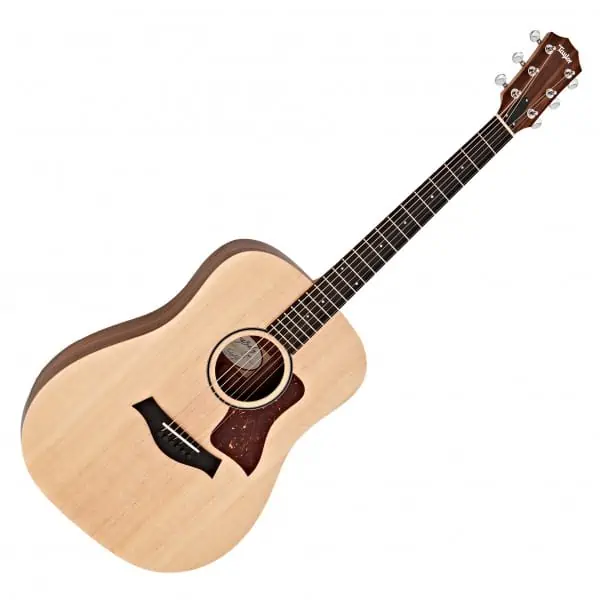
Experienced Players
FEATURES: Features a sublime quality
solid sitka spruce top.
- Solid Sitka spruce top.
- Excellent playability.
- Produces dynamic sound.
- Large size may not be suitable for younger players.
When you click ‘Check Price’, you’ll see there are loads of great places to buy this item. Our personal favorite is Sweetwater for the US, and Thomann and Gear4Music for the UK & Europe.
They are the largest music retailers, with excellent customer service, competitive prices, really fast shipping, and the longest guarantees.
The professional musician who wrote this article combined many things,
from the product build, manufacturer’s reputation through to feedback
from other users, to create our famous TedScore™.
Bass Guitar: Perfect for Playing Along
The bass guitar offers several advantages for adult learners, especially its lower tuning and simpler chord structures. With only four strings, you’ll master the basic patterns much faster than on a six-string guitar.
Bass focuses on rhythm and root notes rather than complex melodies. This approach lets you quickly start playing along with your favorite songs.
Bass guitar benefits:
- Only 4 strings to learn
- Essential for joining bands
- Less finger stretching required
- Provides steady foundation in music
The instrument’s role in a band is straightforward but crucial. You’ll find that bands are always looking for bass players, making it easier to find opportunities to play with others.
Your learning curve will be gentler compared to lead guitar. The bass lets you focus on timing and groove rather than complex chord changes.
3/4 LA Bass Guitar by Gear4music
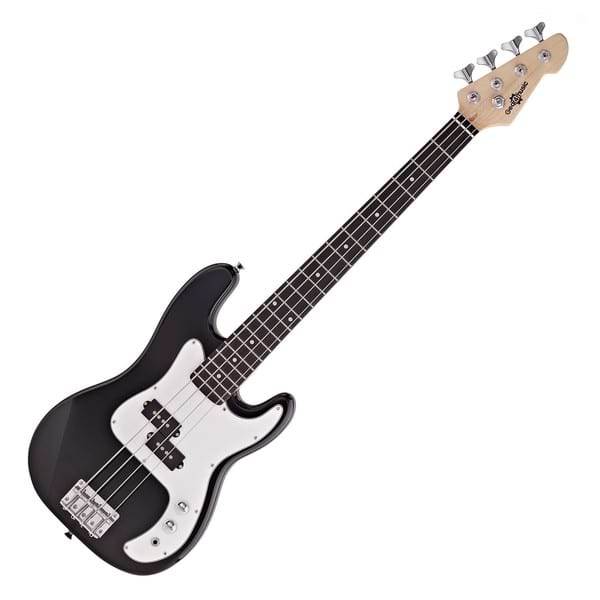
PERFECT FOR: Beginner
FEATURES: Scale Length: 77.5cm
OTHER INFO: Split coil humbucking pickup with volume and tone controls
3/4 LA Bass Guitar by Gear4music
- Lightweight and easy to carry
- Excellent value for its price
- Produces a rich, authentic tone
- Durable construction with sustainable wood
- Scaled-down size may not be suitable for players with larger hands
- Limited range of tonal options compared to some higher-end bass guitars
When you click ‘Check Price’, you’ll see there are loads of great places to buy this item. Our personal favorite is Sweetwater for the US, and Thomann and Gear4Music for the UK & Europe.
They are the largest music retailers, with excellent customer service, competitive prices, really fast shipping, and the longest guarantees.
The professional musician who wrote this article combined many things,
from the product build, manufacturer’s reputation through to feedback
from other users, to create our famous TedScore™.
Violin: Simple Melodies for Beginners
The violin might surprise you as a beginner-friendly option. Anyone over six years old can start playing violin with just a few days of practice.
Violins come in various sizes to fit adult hands comfortably. You won’t struggle with an instrument that feels too big or awkward.
Getting started with violin:
- Choose an acoustic violin for learning
- Daily practice with a teacher works best
- Focus on simple melodies first
- Electric violins are better for experienced players
The violin teaches excellent music theory fundamentals. You’ll develop strong ear training and precise finger placement skills.
Finding musical groups is easy since violins appear in orchestras, folk bands, and chamber music. The instrument opens doors to many different musical communities and styles.
Yamaha V3 Series Student Violin Outfit

FEATURES: It comes complete with a case, bow and rosin
OTHER INFO: Superior durability Woods
- With high-quality fittings, Chin rest, pegs and fingerboard
- Great sound and playability
- Solid reputation and support
- Complete kit
- None
When you click ‘Check Price’, you’ll see there are loads of great places to buy this item. Our personal favorite is Sweetwater for the US, and Thomann and Gear4Music for the UK & Europe.
They are the largest music retailers, with excellent customer service, competitive prices, really fast shipping, and the longest guarantees.
The professional musician who wrote this article combined many things,
from the product build, manufacturer’s reputation through to feedback
from other users, to create our famous TedScore™.
Learning Basic Music Theory with Easy Instruments
Easy instruments like keyboard and piano make learning music theory much simpler than you might think. These instruments help you see how chords work together and make reading music less scary.
Understanding Chords and Melody
The keyboard is perfect for learning chords because you can see exactly how they’re built. When you press C, E, and G together, you create a C major chord – it’s that simple!
Start with these basic chords:
- C major: C-E-G
- F major: F-A-C
- G major: G-B-D
These three chords can play hundreds of songs. You’ll be amazed how many tunes use just these simple combinations.
Piano keys show you melody patterns clearly too. White keys follow a pattern that repeats every eight notes.
When you play a melody, you’re just moving from one note to another in a musical way. Try playing simple melodies like “Twinkle Twinkle Little Star” to hear how notes flow together.
The beauty of keyboard instruments is that music theory becomes visual. You can see the distance between notes and understand why some combinations sound good together.
Sight-Reading and Sheet Music Basics
Sheet music looks scary at first, but it’s just a map showing you which keys to press. The piano makes this easier because each line and space on the staff matches a specific key.
Start with the treble clef, which shows higher notes. The lines represent E, G, B, D, F – remember “Every Good Boy Does Fine.”
The spaces between lines are F, A, C, E – think “FACE” to remember them easily.
Don’t try to read complex pieces right away. Begin with simple melodies that use just a few notes.
Keyboard instruments help you connect what you see on paper to what you hear. When you press middle C, you’ll see exactly where it sits on the staff.
Practice reading one hand at a time before trying both hands together. Your brain needs time to make these connections automatic.
Tips for Choosing the Right Instrument as an Adult
The perfect instrument for you depends on your musical dreams, living situation, and the genres that make your heart sing. Choosing the right instrument as an adult learner means finding the sweet spot between your goals, physical abilities, and practical needs.
Matching Your Musical Goals
Think about what you want to achieve with your musical journey. Do you dream of playing around a campfire, performing on stage, or just enjoying quiet moments at home?
If you want to play popular songs quickly, the ukulele offers four simple strings and cheerful sounds perfect for sing-alongs. For classical music lovers, piano provides a logical key layout that makes learning melodies straightforward.
Quick Goal Matching:
- Social playing: Guitar, ukulele, harmonica
- Solo enjoyment: Piano, violin, recorder
- Band participation: Bass guitar, drums, keyboard
- Travel music: Harmonica, ukulele, small percussion
Consider how much time you can dedicate to practice. Hand percussion instruments like bongos require minimal coordination and let you experiment with rhythms right away.

Considering Your Lifestyle and Space
Your living situation plays a huge role in instrument choice. Apartment dwellers need different solutions than house owners with dedicated music rooms.
Digital keyboards with headphones work better than drum sets if you live in tight quarters. Acoustic guitars can disturb neighbors, while electric guitars with headphones let you rock out silently.
Space-Smart Options:
- Tiny spaces: Harmonica, ukulele, recorder
- Apartments: Digital piano, electric guitar, hand percussion
- Houses: Acoustic piano, drum kit, violin
Think about portability too. Can you easily move your instrument for lessons or jam sessions? A harmonica fits in your pocket, while a piano stays put.
Budget matters just as much as space. Recorders are inexpensive and easy to learn, making them perfect starter instruments.

Exploring Different Musical Genres
Your favorite music styles should guide your instrument choice. Different genres favor different instruments, and starting with music you love keeps motivation high.
For folk and indie music, acoustic guitar opens doors to countless songs in just a few chords. Jazz lovers might gravitate toward piano or bass guitar for those smooth, walking basslines.
Genre-Instrument Matches:
- Rock/Pop: Electric guitar, bass, drums, keyboard
- Folk/Country: Acoustic guitar, harmonica, violin
- Classical: Piano, violin, recorder
- World Music: Hand percussion, various cultural instruments
Bass guitar works well for adults with some guitar experience since it uses similar techniques but focuses on rhythm and root notes. This makes it easier to jump into playing with others quickly.
Don’t forget about your voice! Vocal training develops singing abilities while teaching music theory and improving overall musicality across all genres.
Next Steps: Starting Your Musical Journey
Getting quality instruction and staying motivated are the two most important factors for success when learning an instrument as an adult. You’ll need both structured learning and personal drive to reach your musical goals.
Finding Lessons and Learning Resources
You have several options for learning your chosen instrument. Private lessons with a local teacher give you personalized attention and immediate feedback on your technique.
Many music schools offer adult group classes that cost less than private lessons. These classes let you learn alongside other beginners in a supportive environment.
Online platforms provide flexible learning that fits busy adult schedules. YouTube tutorials are free but lack structure and feedback.
Popular Online Learning Options:
- Paid platforms – Structured courses with progress tracking
- Video tutorials – Free content but requires self-discipline
- Interactive apps – Gamified learning with instant feedback
Consider hybrid learning that combines different methods. You might take monthly private lessons while using online resources for daily practice.
Learning music as an adult beginner requires finding methods that work with your lifestyle and commitments.
Motivation and Staying Inspired
Adult learners face unique challenges that can hurt motivation. Work stress, family duties, and time constraints make consistent practice difficult.
Set realistic practice goals that fit your schedule. Even 15 minutes of daily practice beats hour-long sessions once a week.
Track your progress with recordings or a practice journal. Hearing improvement over time keeps you motivated when progress feels slow.
Motivation Strategies:
- Play songs you actually enjoy
- Set small, achievable weekly goals
- Join adult music groups or online communities
- Celebrate small wins and milestones
Remember that learning an instrument as an adult requires patience with yourself. Progress might feel slower than when you were younger, but your life experience helps you understand music theory and appreciate the learning process.
Find other adult learners to share the journey with you. Having practice partners or joining community bands gives you social support and performance opportunities.
Adults often wonder about the best instruments to start with and whether they can realistically learn music later in life. These common questions address practical concerns about choosing instruments, learning at home, and starting your musical journey at any age.
FAQ's
The ukulele tops the list of easiest instruments with only four strings and simple chord patterns. You can play recognizable songs within your first week of practice.
Keyboards offer another excellent starting point since you can create beautiful music with single notes. The keyboard allows you to use headphones for private practice sessions.
Bass guitars are simpler than regular guitars because they focus on single notes rather than complex chords. The four-string layout makes finger positioning much easier to learn.
Drums provide instant gratification since basic beats sound impressive right away. You only need to learn one beat pattern to create enjoyable music.
Keyboards and digital pianos work perfectly for home practice with built-in volume controls and headphone options. You won’t disturb neighbors while learning new songs.
The harmonica fits in your pocket and produces pleasant sounds even for beginners. Its compact size makes it ideal for practicing anywhere in your home.
Ukuleles create soft, gentle sounds that work well in apartments or shared living spaces. The quiet volume won’t cause noise complaints from family members.
Electric guitars with headphones let you practice silently at any hour. You can also use apps and online tutorials for guided learning sessions.
Piano and keyboards work exceptionally well for mature learners because they don’t require physical strain. The visual layout of keys makes music theory easier to understand.
The recorder serves as an excellent gateway to other wind instruments without demanding intense breath control. Many adults find it surprisingly enjoyable despite childhood memories.
Ukuleles are gentle on fingers and joints while still producing satisfying music. The soft nylon strings won’t cause discomfort during extended practice sessions.
Bongos and simple percussion instruments let you focus on rhythm without complex finger work. They’re perfect for adults who want to play music socially.
Learning music at 40 is completely normal and offers unique advantages over childhood learning. Your mature focus and discipline actually help you progress faster than younger students.
Adult brains excel at understanding music theory and connecting patterns. You can grasp concepts like chord progressions and rhythm more quickly than children.
Many instruments can be learned at any age with proper dedication and practice. Your life experience gives you emotional depth that enhances musical expression.
Starting at 40 means you’re learning for pure enjoyment rather than obligation. This intrinsic motivation often leads to more consistent practice and better results.
The ukulele requires zero musical background and teaches fundamental concepts quickly. Four strings and basic chord shapes get you playing songs within days.
Bongos work perfectly for rhythm beginners since you simply use your hands to create beats. No complex finger positions or breathing techniques required.
Keyboards let complete beginners start with single-note melodies before advancing to chords. The visual layout helps you understand how music works.
Recorders teach basic music reading and breath control without overwhelming complexity. They’re inexpensive and provide a solid foundation for other instruments.
The guitar has abundant online tutorials and resources for independent learning. Video lessons can teach you everything from basic chords to advanced techniques.
Ukuleles are perfect for self-teaching because mistakes sound less harsh than on other instruments. Online chord charts and song tutorials make learning straightforward.
Keyboards and pianos offer excellent self-learning opportunities through apps and YouTube videos. The visual nature of keys makes concepts easier to grasp independently.
Harmonicas can be learned through online resources and don’t require formal instruction. Their small size and simple technique make them ideal for independent practice.




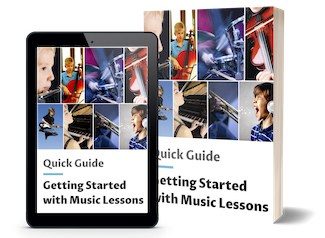



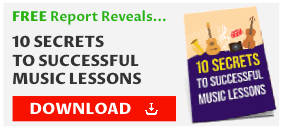

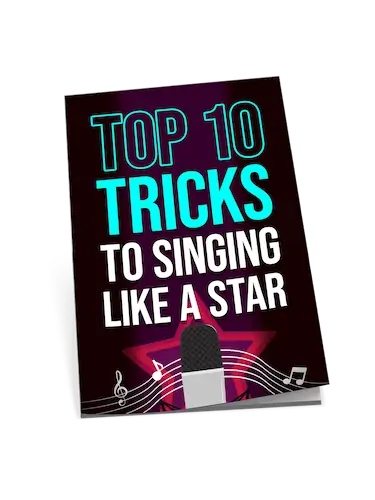
Haha, finally a music guide that considers my aching hands and apartment neighbors! This is the kind of practical wisdom I need, not some master the violin in 24 hours fantasy. The breakdown of physical suitability is gold, especially the part about adult fingers versus tiny recorder holes – speak for the choir! Choosing an instrument is less about finding a muse and more about finding something that wont make my spouse want to trade me in for a quiet pet. The TedScore™ is my new BFF. Thanks for the laugh and the reality check!